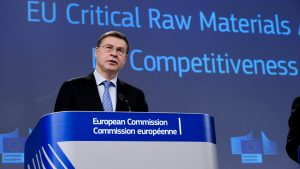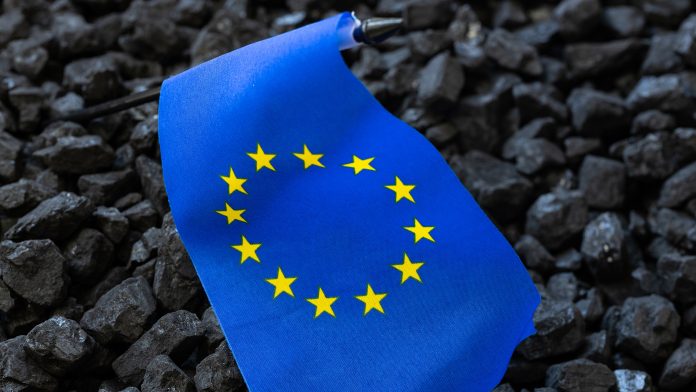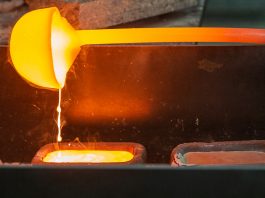In this article, The Innovation Platform explores how Europe can establish its place in the global rare earth supply chain.
As the global economy pivots towards greener and more innovative industries, the demand for critical raw materials – particularly rare earth elements – has become an issue of strategic importance.
These materials, integral to the net zero, digital, aerospace, and defence sectors, are currently sourced predominantly from monopolistic third-country suppliers. This reliance on external providers poses significant risks to supply chains and threatens Europe’s economic resilience, overarching climate, and digital objectives.
The European Commission has proposed a comprehensive set of actions encapsulated in the newly adopted Critical Raw Materials Act to navigate these challenges. The act aims to secure a diversified, affordable, and sustainable rare earth supply chain through increased European production.
The increasing demand for critical raw materials
Critical raw materials (CRM) constitute a vital aspect of the global rare earth supply chain, given their indispensable role in strategic sectors such as net-zero industries, digital technologies, aerospace and defence.
These materials are vital for manufacturing key technologies that drive European green and digital transitions. However, the EU’s reliance on CRM imports from quasi-monopolistic, third-country suppliers exposes its supply chains to vulnerabilities that can significantly hinder its climate and digital objectives.
The increasing demand for critical raw materials and Europe’s heavy import dependence necessitate urgent interventions to mitigate rare earth supply chain risks. The aftermath of Covid-19 and the energy crisis following Russia’s invasion of Ukraine have underscored these vulnerabilities, emphasising the need for enhanced economic resilience through sustainable sourcing of critical raw materials.
The European Commission has proposed comprehensive measures to ensure secure, diversified, affordable, and sustainable access to these essential elements to achieve this goal. These measures include regulatory reforms to enhance domestic capacities along the CRM supply chain while fostering diversification strategies to reduce dependencies on a single or few countries.
One approach towards achieving greater self-sufficiency in the rare earth supply chain is improved refining, processing, and recycling within Europe. This strategy not only advances sustainability goals but also promotes economic development within member states by creating opportunities for job creation in exploration and extraction activities.
Furthermore, investing in research and innovation can lead to breakthroughs that reduce consumption or find alternatives to these materials altogether. While achieving complete self-reliance may be unrealistic due to geological limitations, among other factors, these initiatives nonetheless contribute towards building resilient CRM supply chains capable of withstanding future shocks while supporting Europe’s twin transitions towards a green and digital future.
Strategic dependencies and risks associated with the rare earth supply chain
Strategic dependencies on a limited number of third-party suppliers pose significant risks for the EU, particularly in securing affordable and sustainable rare earth supply chains.
The region’s heavy reliance on imports exposes it to considerable supply chain vulnerabilities and threatens its economic resilience. These dependencies are often quasi-monopolistic, dominated by a few supplier countries that can disrupt the flow of rare earth elements crucial for strategic sectors such as aerospace, defence, and digital industries.
Moreover, these vulnerabilities were further highlighted during recent crises like Covid-19 and the energy aftermath following Russia’s invasion of Ukraine.
In response to these challenges, the EU is adopting risk mitigation measures to enhance the resilience and diversification of its rare earth supply chain. A key component is the proposed Critical Raw Materials Act, which seeks to monitor and mitigate risks associated with disruptions in supply chains.

Moreover, it aims at improving circularity and sustainability while enabling better coordination among Member States regarding strategic stocks. The Act also sets benchmarks for domestic capacities within strategic raw material supply chains with specific targets for extraction, processing, and recycling – all to be achieved by 2030.
These marked efforts reflect Europe’s commitment towards eliminating reliance on single or few country suppliers, instead opting for diversification strategies that encourage cooperation with reliable trading partners globally. These steps bring Europe closer to achieving its climate ambitions and ensure a higher level of diversification within the rare earth supply chain, benefiting European businesses overall.
Importantly, this approach also underlines Europe’s recognition that improved security and affordability of critical raw materials must coexist harmoniously with increased efforts to mitigate any adverse environmental impacts within the EU member states and partner countries supplying these resources.
Internal actions and measures to ensure economic security
To fortify the resilience and security of critical raw materials, the European Union has outlined a series of internal actions integral to the newly adopted Critical Raw Materials Act. These include setting clear domestic capacity benchmarks for 2030 along strategic raw material supply chains, which call for at least 10% of the EU’s annual consumption for extraction, 40% for processing, and 15% for recycling.
Furthermore, no more than 65% of the Union’s consumption should be sourced from a single third country at any relevant stage of processing. This approach seeks to reduce import dependency while encouraging diversification in sourcing these materials.
Simplified permitting is another key element in this strategy. The Act aims to reduce administrative burdens and streamline procedures for Europe’s rare earth supply chain. Strategic Projects benefit from support access to finance and shorter approval timeframes – just two years for extraction permits and one year for processing and recycling permits. Monitoring measures have been put forth to strengthen supply chain resilience against potential risks.
The final components of these internal measures involve considerable investment in research and innovation related to critical raw materials and strategies promoting a circular economy. The Commission is set to bolster the adoption and deployment of breakthrough technologies in this field while establishing large-scale skills partnerships on critical raw materials alongside a Raw Materials Academy. Simultaneously, efforts will be made towards improving sustainability by requiring Member States to adopt national measures that promote the collection of waste rich in critical raw materials for recycling into secondary resources – fostering cyclical use instead of linear consumption patterns.
Environmental considerations
Ensuring the integrity of the environment forms a crucial component of the Critical Raw Materials Act, with stringent measures adopted to foster sustainable practices in extracting, processing, and recycling these materials.
The Act recognises that improved security and affordability of the rare earth supply chain must align with increased efforts to mitigate any adverse impacts within the EU and third countries. This includes considerations for labour rights, human rights, and environmental protection. To translate these principles into actionable targets, Member States are expected to adopt and implement national measures to improve the collection of rich waste and ensure its recycling into secondary critical raw materials.
The Act also emphasises that secure supply chains should not compromise environmental standards or worker rights. It mandates investigations into potential recoveries of crucial resources from extractive waste in current mining activities and historical mining waste sites.
Moreover, products containing permanent magnets must meet specific circular economy-based criteria providing vital information about their recyclability and recycled content. Thus, by addressing these aspects comprehensively, Europe’s role as a supplier will be strengthened and contribute significantly towards global movements for responsible sourcing and sustainable development within the rare earth supply chain.
International engagement and partnerships
Diversifying the Union’s imports of rare earth elements forms a key aspect of the EU’s international strategy, acknowledging that self-sufficiency is unlikely and reliance on imports will continue.
This realisation necessitates robust participation in global market trends and the identification of profitable investment opportunities in emerging markets and developing economies. As part of its Global Gateway strategy, the EU seeks to establish mutually beneficial partnerships that secure a diversified rare earth supply chain and promote stability in international trade while strengthening legal certainty for investors.
Technology advancements are essential in this context as they offer possibilities for optimising extraction processes, improving resource efficiency, and supporting sustainable practices in partner countries. The EU aims to foster innovation and skills development by establishing a Raw Materials Academy, focusing on breakthrough technologies relevant to supply chains. Concurrently, it plans to use the Global Gateway to assist partner countries in building their extraction capacities incorporating these advanced technologies.
The geopolitical implications arising from this approach are significant. By seeking strategic engagement with reliable global partners, the EU reinforces its commitment to creating resilient value chains while contributing to regional stability and conflict resolution.
Moreover, it emphasises adherence to labour rights, human rights and environmental standards within these relationships.
Therefore, while ensuring its economic resilience amidst the increasing demand for rare earth elements and other critical minerals, Europe is concurrently promoting sustainable economic developments worldwide without compromising its climate ambitions or digital goals.
Please note, this article will also appear in the fifteenth edition of our quarterly publication.









